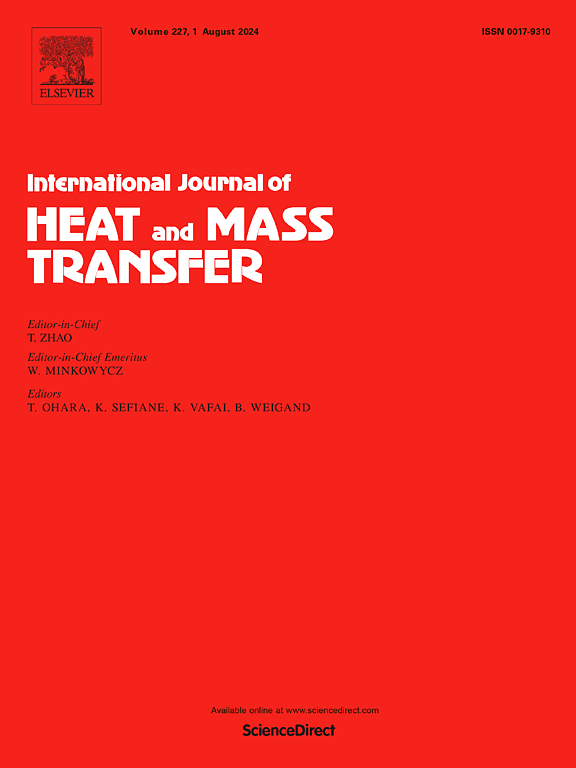Experimental investigation on gas-liquid two-phase flow patterns and vibration characteristics of an inducer pump
IF 5
2区 工程技术
Q1 ENGINEERING, MECHANICAL
International Journal of Heat and Mass Transfer
Pub Date : 2024-12-02
DOI:10.1016/j.ijheatmasstransfer.2024.126518
引用次数: 0
Abstract
Inducers typically enhance centrifugal pump performance in two-phase flow regimes by producing more uniform mixtures and increasing pressure before the impeller. Their impact is most pronounced under part-load conditions compared to overload situations. This study experimentally investigates air-water two-phase flow behavior within a pump inducer. Using high-speed photography and grayscale image processing, five distinct gas-liquid flow patterns were identified: bubble flow, strip bubble flow, agglomerated bubble flow, gas pocket flow, and segregated flow. The inducer's head and vibration characteristics were also measured. Results show that flow pattern transitions significantly affect performance degradation and vibration. Specifically, the head decreases as the liquid flow rate increases at a constant gas volume fraction (λ) and generally follows a downward trend as λ increases at a constant liquid flow rate. Bubble flow, representing minimal λ, has a negligible effect on performance. However, with higher λ, a sharp decline in head occurs within the agglomerated bubble flow range, followed by a gradual decrease during gas pocket flow under both optimal and overload conditions. In part-load conditions, the head decreases sharply during strip bubble and segregated flow. While bubble flow mitigates vibration fluctuations, increasing GVF leads to higher vibration amplitude, particularly in the range of 2–8 times the inducer's rotational frequency, due to flow pattern instability.
求助全文
约1分钟内获得全文
求助全文
来源期刊
CiteScore
10.30
自引率
13.50%
发文量
1319
审稿时长
41 days
期刊介绍:
International Journal of Heat and Mass Transfer is the vehicle for the exchange of basic ideas in heat and mass transfer between research workers and engineers throughout the world. It focuses on both analytical and experimental research, with an emphasis on contributions which increase the basic understanding of transfer processes and their application to engineering problems.
Topics include:
-New methods of measuring and/or correlating transport-property data
-Energy engineering
-Environmental applications of heat and/or mass transfer

 求助内容:
求助内容: 应助结果提醒方式:
应助结果提醒方式:


